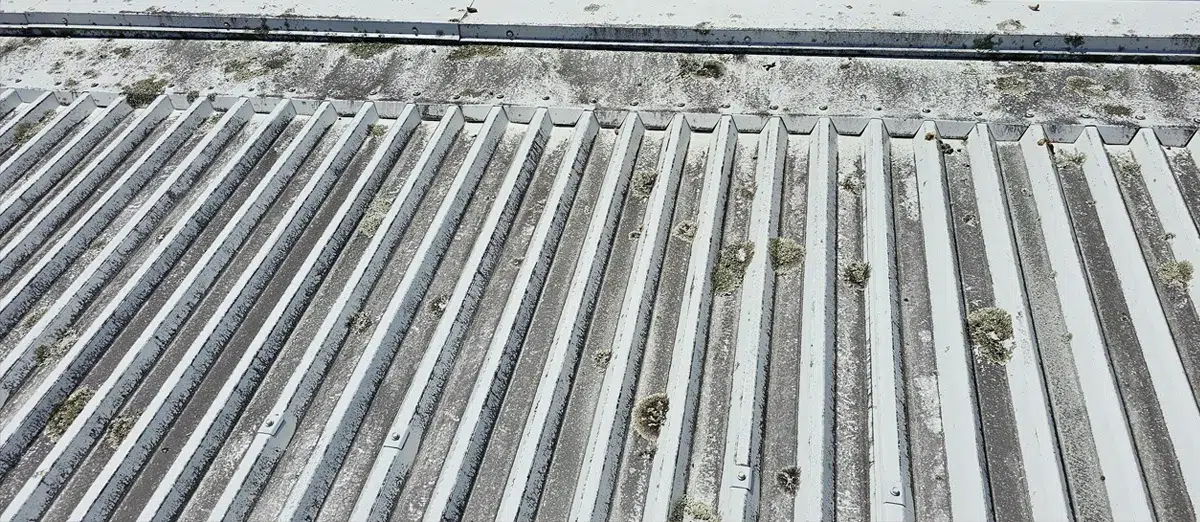Moss growth on roofs can lead to significant damage if left unchecked, making it crucial for homeowners to understand the risk factors involved. Identifying and addressing these factors early on and taking proactive measures are essential to preventing costly repairs and extend the life of the roof.
Several common risk factors contribute to moss growth on roofs. Understanding these factors can help homeowners take preventive measures to protect their roofs.
1. Shaded Areas
Moss thrives in shaded areas with limited sunlight. Roofs that are partially or fully shaded by trees, nearby buildings, or other structures are more susceptible to moss growth. The lack of direct sunlight creates a damp environment, ideal for moss to develop. If your roof receives little sunlight it’s important to check for new moss growth regularly.
2. Roof Orientation
In Auckland, New Zealand, a roof’s north-facing side generally receives more sunlight. This is because Auckland is in the Southern Hemisphere, where the sun’s path is to the north. As a result, north-facing roofs in this region typically get more direct sunlight throughout the day, helping to keep them drier and less prone to moss growth. The difference in sunlight exposure between the north-facing and south-facing sides of a roof in Auckland is more pronounced during winter because the sun’s path is lower in the sky.
3. Roof Pitch
Roof pitch, or the steepness of a roof’s slope, significantly affects the likelihood of moss growth. A steeper roof pitch generally sheds water more effectively, reducing the chances of moisture retention that can promote moss growth. Flat or low-sloped roofs may not shed water and debris as effectively as steeply pitched roofs, increasing the likelihood of moisture retention.
4. Moisture
Moss requires moisture to grow. Roofs exposed to frequent rain, dew, or high humidity are at a higher risk which is why it is so common to see moss growing on roofs on Auckland homes. Poor drainage systems, clogged gutters, or inadequate roof ventilation can also trap moisture, promoting moss growth.
5. Organic Debris
Leaves, twigs, and other organic debris can accumulate on roofs, especially if overhanging trees are present. This debris retains moisture and provides nutrients, creating a suitable environment for moss to grow. If you have a large tree over part of your roof, it’s best practice to clear the fallen leaves and sticks from the roof and gutter regularly.
6. Climate
Regions with cooler, wetter climates are more conducive to moss growth. Areas with high rainfall, frequent fog, or consistent humidity provide the moisture needed for moss to thrive.
7. Proximity to Water Sources
Homes located near the ocean, lakes, rivers, or other bodies of water may experience higher humidity levels, which can promote moss growth on roofs.
8. Aging Roofs
Older roofs are more susceptible to moss growth due to wear and tear. As roofing materials age, they may become more porous or rough, providing an ideal surface for moss to grow. If your roof is nearing the end of its lifespan, it may be more prone to moss and other issues.
9. Poor Roof Maintenance & Lack of Preventative Measures
Failing to implement preventative measures, such as applying moss-resistant treatments, can increase the risk of moss growth. Similarly, lack of regular roof maintenance, such as cleaning and inspections, allows moss to establish and spread. Neglected roofs are more likely to develop moss infestations, leading to potential damage.
10. Previous Moss Infestations
If your roof has had moss problems in the past, it is more likely to recur. Regular inspections and maintenance are crucial to prevent re-infestation.
What To Do If Your Roof Has Moss Growing On It
By addressing these risk factors, and inspecting your roof often, homeowners can reduce the likelihood of moss growth and protect their roofs from potential damage. If you observe any signs of moss growing on your roof, it’s essential to address the issue promptly. Contact a professional roof moss removal company for an inspection and treatment. They can assess the extent of the moss growth and recommend the appropriate treatment to prevent further damage and ensure your roof’s longevity.

With over 35 years’ experience in the roof maintenance business, Cowperthwaite Roof Restorations has the expertise and roof restoration systems to revitalise your roof, adding life and colour that will add value to your home or business.
Before considering replacing your roof, call us to see if we can restore it using one of our specialised roof recoating systems.

